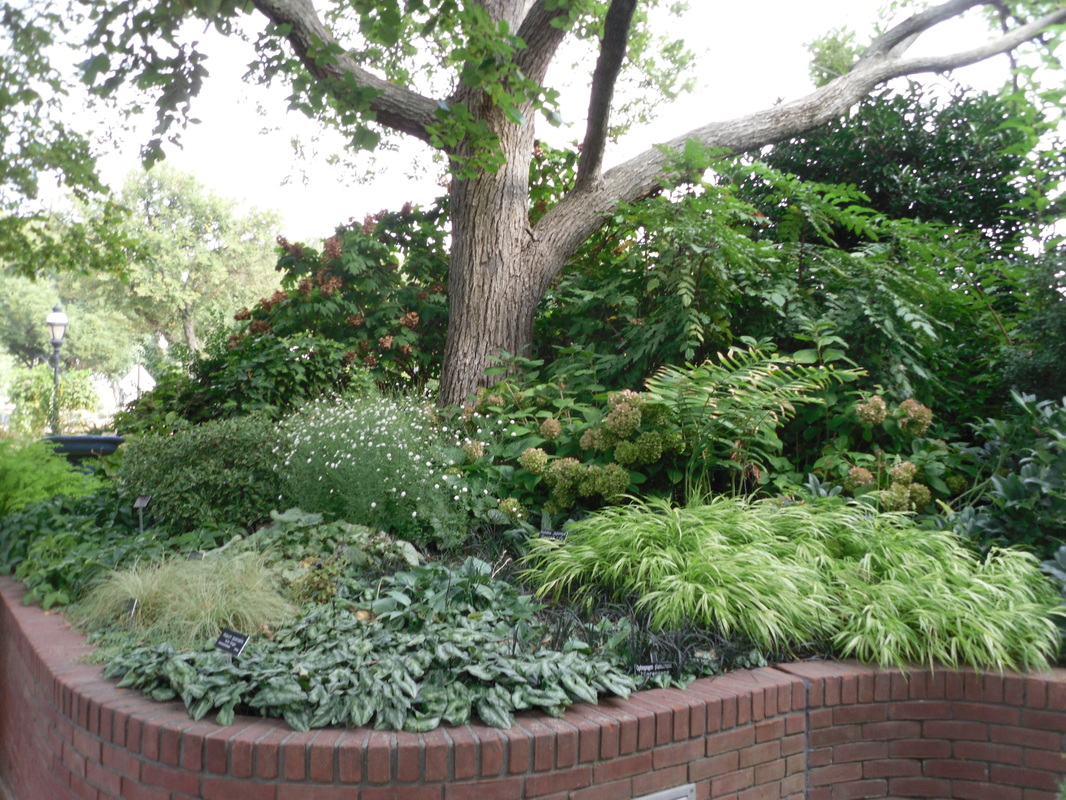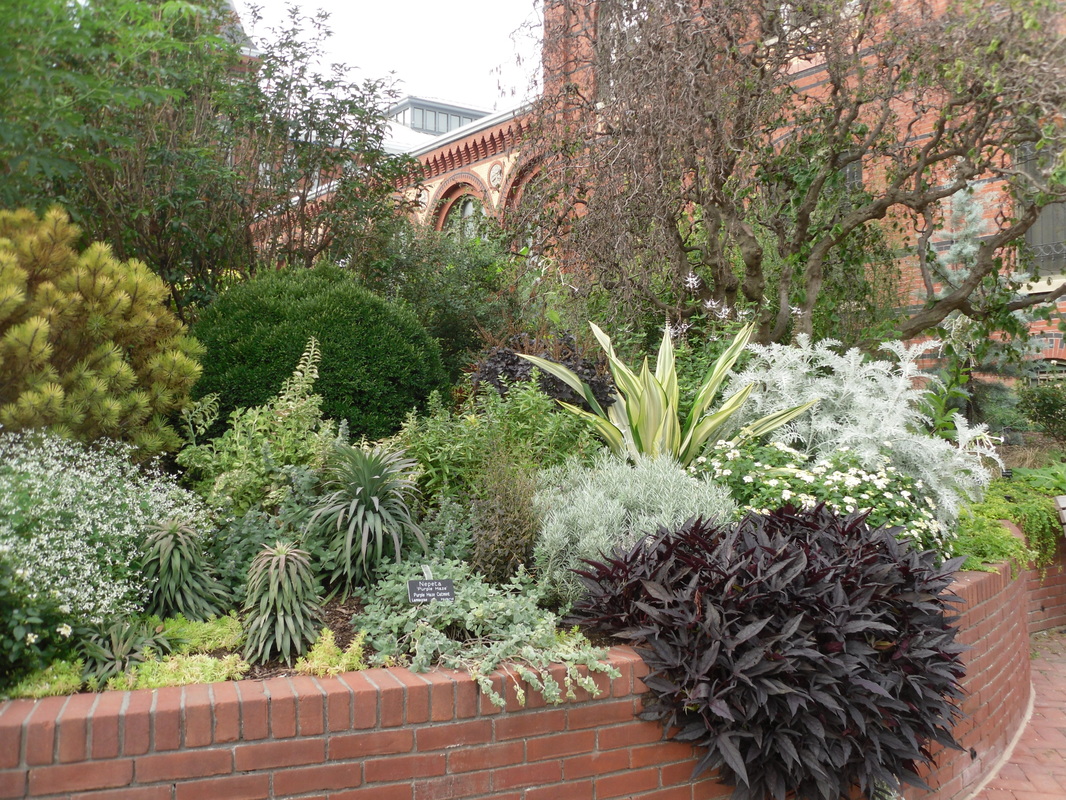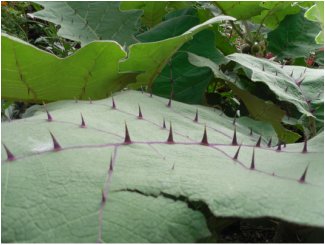|
Dawn Szelc LDG Secretary Have you visited a small garden that took your breath away? This was the reaction for many when the LDG recently visited the Smithsonian’s Mary Livingston Ripley Garden. We met with Janet Draper who has worked as the horticulturist of the garden for 18 years. She talked about not acting as a designer, but her feel for plant placement and extensive knowledge of plants was evident everywhere. The area where the garden is located was planned as a parking lot, however Mary Ripley was influential in creating the garden as well as having a parking area that is mostly hidden to those in the garden. Mary was the wife of the then Secretary of the Smithsonian, Sydney Dillon Ripley, and was involved in the Smithsonian Institution’s Women’s Committee. The committee hired Hugh Newell Jacobsen to design the space, and though Jacobsen was known to be very modern in his design aesthetic, the garden is full of sweeping curves and cozy spaces.  The American Elms that had been planted all along the National Mall and in this space had to be retained first and foremost. The garden walls and beds were designed around these large specimens. Janet has two volunteers that help her and there are 17 total staff members who handle all the Smithsonian gardens. Many of the plants they put in each year are annuals and tropicals, so that there is wonderful color during the height of the tourist season. Some of these are moved back to the greenhouse in Suitland, MD, but many are just replanted each year. Janet chooses a color scheme and requests plants accordingly in the fall. They have a buyer who makes the purchases from various sources. For fertilizer she uses anything that is organic and for soil amendments she uses compost and pine fines whenever possible. In the fall she plants bulbs, pansies, and winter crops like kale, and cabbages. In the spring once the tulips are done blooming, she begins ripping them out and putting in the summer plants. During the summer most of the work involves maintenance of what is already growing. The fountain is turned off from November through March and she must find a way to make it look nice even when dry – sometimes trying out different seasonal decorations or blue glass to look like water. During the winter they are in charge of snow removal which mostly must be done by hand shoveling. The garden does have an irrigation system. It is scheduled to run at night for certain time periods, but since it was on when we were there, something appeared to be amiss. Janet mentioned that she needs to find a replacement woody for the Corylus avelana that was in the front garden because it was dying. She requested help from LDG members to suggest an alternative. She also has problems with the Arnold’s Promise Witch hazel that has a new fungus and was not thriving. Again LDG members might be able to provide some suggestions for her. We toured all the various beds, with Janet talking extensively about the many interesting plants in each one. Some highlights were Naranjillo or Solanun quitoense from Ecuador. It is a plant with many thorns everywhere, even on the leaves, and produces an orange fruit. She likes to use this plant as a teaching moment for showing unique plants to visitors. Purple leaf cotton was another interesting plant with white cotton bolls showing on the dark purple plant, as well as Tassel flower, unique begonias, and Spider lily. Janet showed the group the large flowers from the Dutchman’s pipe vine and explained the life cycle of the fly that enters the flower and helps to pollinate it. A big LDG thank you to Janet, whose extensive knowledge and experience in the garden made this tour a delightful experience. The view at the back side of the garden was as satisfying as the front of the garden!
0 Comments
Leave a Reply. |
AuthorsLDG is a non-profit corporation dedicated to the exchange and enhancement of knowledge relevant to the landscape design profession. We are a group of professional designers in the metropolitan Washington, DC area. Membership is meant for students studying and professionals employed in landscape design or associated professions (i.e. arborists, installers, contractors, etc.). Archives
October 2023
CategoriesPast Newsletters can be found in the Members Only Section of the LDG Membership Connection. You must sign in to view these files.
Past Newsletters |
|
Search for a Landscape Designer in Your Area:
|








 RSS Feed
RSS Feed
